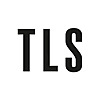Fungi can be found on all continents, thriving even in the most challenging biomes. They are strange beyond belief, yet integrated into many aspects of our daily lives; they can harm us or heal us, join with other forms of life or destroy whole ecosystems. Where to even start with such an enormous subject? “Without a map nobody could find a way through the innumerable species out there”, Richard Fortey writes. In the absence of such he makes an excellent guide.
Fortey is well known as a communicator of the natural world. A retired palaeontologist, having worked for decades at the Natural History Museum, he has written several successful nonfiction books and presented on radio and television. In Close Encounters of the Fungal Kind he wisely concentrates on the larger fungi that he has come across during his sixty years as an amateur mycologist. These macrofungi often have no common name and may surprise or bewilder even those who have dedicated their lives to the study of them. Fortey notes that the hedgehog mushroom (Hydnum repandum) is one of his favourites to eat, despite its dull appearance: “it looks like many other rather uniformly buff-coloured fungi” – the kind of honest admission that can win a reader over.
His tales of found fungi are organized loosely into chapters by their shared characteristics, such as environment: “Fielders”, for instance, concentrates on those that can be found in churchyards in Oxfordshire, while “Collaborators” looks into the relationships some form with trees and other flora in their environments. These insights are often framed within wanders through the Chilterns, Fortey’s usual foraying ground, taking in morels, puffballs, stinkhorns, inkcaps and magic mushrooms, all of which he describes with extravagant enjoyment. For instance, in the space of two sentences ceps are described as being “made from a kind of ceramic” in “the colour of lightly finished toast”, with stems suggesting “Paleolithic fertility figurines”. Fortey is wildly free with simile in a way that conjures up the sheer oddness of fungi. His authorial voice is warm and welcoming, but beneath this surface the prose contains depths of scientific rigour and complex humour that make for great company.
The book draws together history, geography, language, literature, scientific method and even touches of the fantastical and science fiction. Its title is a play on Steven Spielberg’s film Close Encounters of the Third Kind, paying homage to the otherworldliness of the experience of hunting mushrooms; in a chapter called “Shiners” Fortey describes coming across luminous fungi at night, and how they appear to have “some weird internal electricity … as though the wood itself were holding out illuminated hands”. There are Shakespearean references sitting alongside mentions of H. P. Lovecraft, as well as nods to vampires, hobbits and will-o’-the-wisps. Fortey crosses back and forth between real and imagined territory, confessing his tendency to anthropomorphize along the way.
It’s the frequent change in reference and approach that makes the book such fun to read, and the strongest sections are those that take turns into unexpected territory between Chiltern rambles. One chapter examines the difficult history of naming species in both common and scientific terms, but stresses the importance of that task: “The name of the species is the gate that has to be opened in order to explore the complexities of the world beyond”. In another chapter that focuses on the surprising aromas of mushrooms, ranging from cheap soap to radishes, Fortey mentions his age-related declining sense of smell, and writes with moving clarity about that loss. For a time the strongest fungal fragrances still reached him, such as the aniseed aroma of Clitocybe odora, but now he appoints a member of each group he takes on teaching trips as the “Official Nose” to sniff out and describe in his stead.
Richard Fortey has produced a disarming and delightful personal foray. It’s an enjoyable ramble with a guide who is not afraid to admit that, when it comes to fungi, there’s so much left to discover and lots of unmapped ground to tread.
Aliya Whiteley is the author of The Secret Life of Fungi, 2020, as well as seven books of speculative fiction
The post Mappa fungi appeared first on TLS.

 By Times Literary Supplement | Created at 2024-09-25 15:27:32 | Updated at 2024-09-30 05:24:08
4 days ago
By Times Literary Supplement | Created at 2024-09-25 15:27:32 | Updated at 2024-09-30 05:24:08
4 days ago

